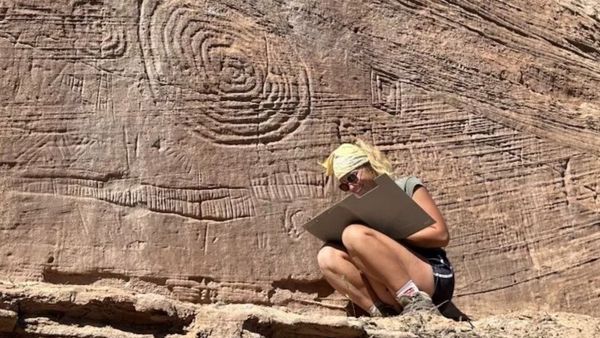Discovery of 'calendar' rock carvings from Ancestral Pueblo in US Southwest surpasses 'wildest expectations'
By Jennifer Nalewicki ( livescience.com ) published about 23 hours ago
Spiral petroglyphs carved into a canyon wall on the Colorado-Utah border may have been used as a calendar by the Ancestral Pueblo.

A woman crouches next to petroglyphs.
Among the artworks, archaeologists discovered a series of spirals that may have been used as a calendar. (Image credit: Jagiellonian University)
While investigating a site in the US Southwest, archaeologists discovered a series of ancient rock carvings that early Native Americans may have used as a calendar.
The site, known as the Castle Rock Pueblo, is on the Mesa Verde plateau straddling the Colorado-Utah border and is best known for the Ancestral Pueblo settlements that are carved into the surrounding canyon walls, according to a statement.
The Ancestral Pueblo were a group of Indigenous peoples who inhabited the Castle Rock Pueblo from about the 1250s to 1274, according to a 2020 study in the journal Antiquity.
"The agricultural Pueblo communities developed one of the most advanced Pre-Columbian cultures in North America," Radosław Palonka, an archaeology professor at Jagiellonian University in Poland who led the investigation, said in the statement. "They perfected the craft of building multi-story stone houses, resembling medieval town houses or even later blocks of flats. The Pueblo people were also famous for their rock art, intricately ornamented jewelry and ceramics bearing different motifs painted with a black pigment on white background."
More:
https://www.space.com/calendar-rock-carvings-ancestral-pueblo
